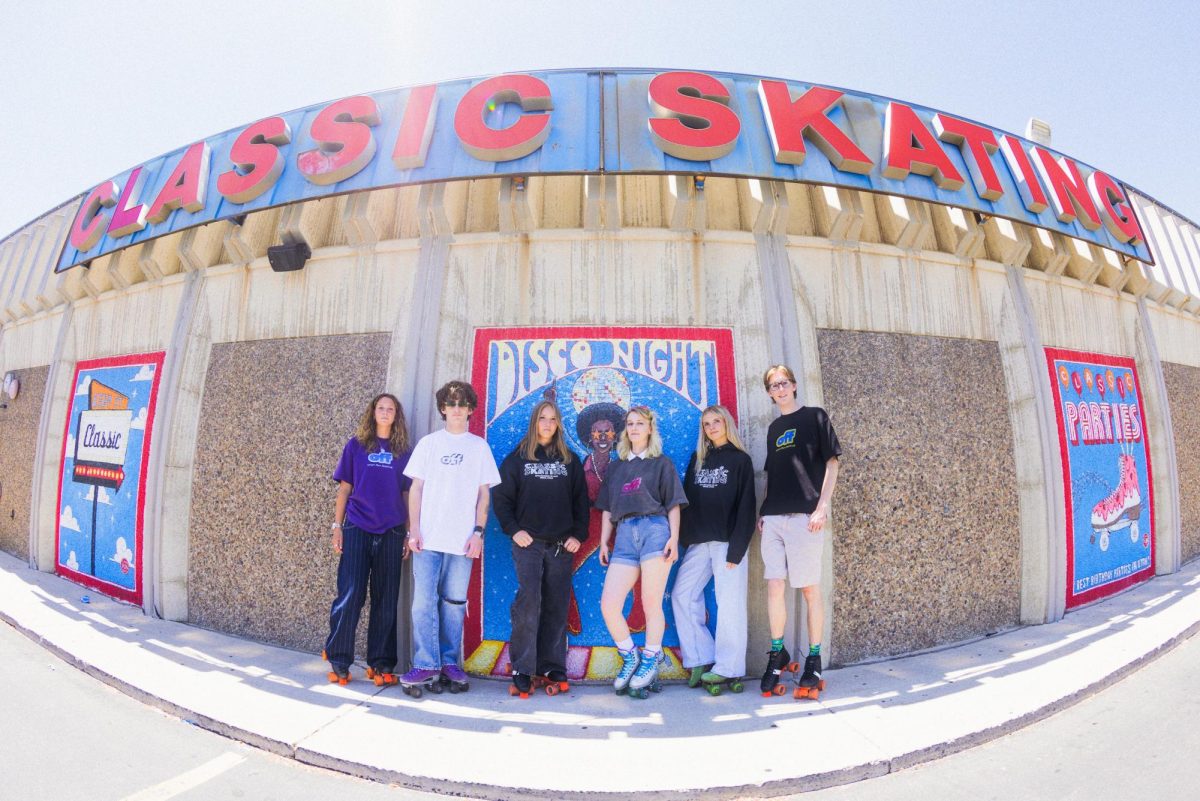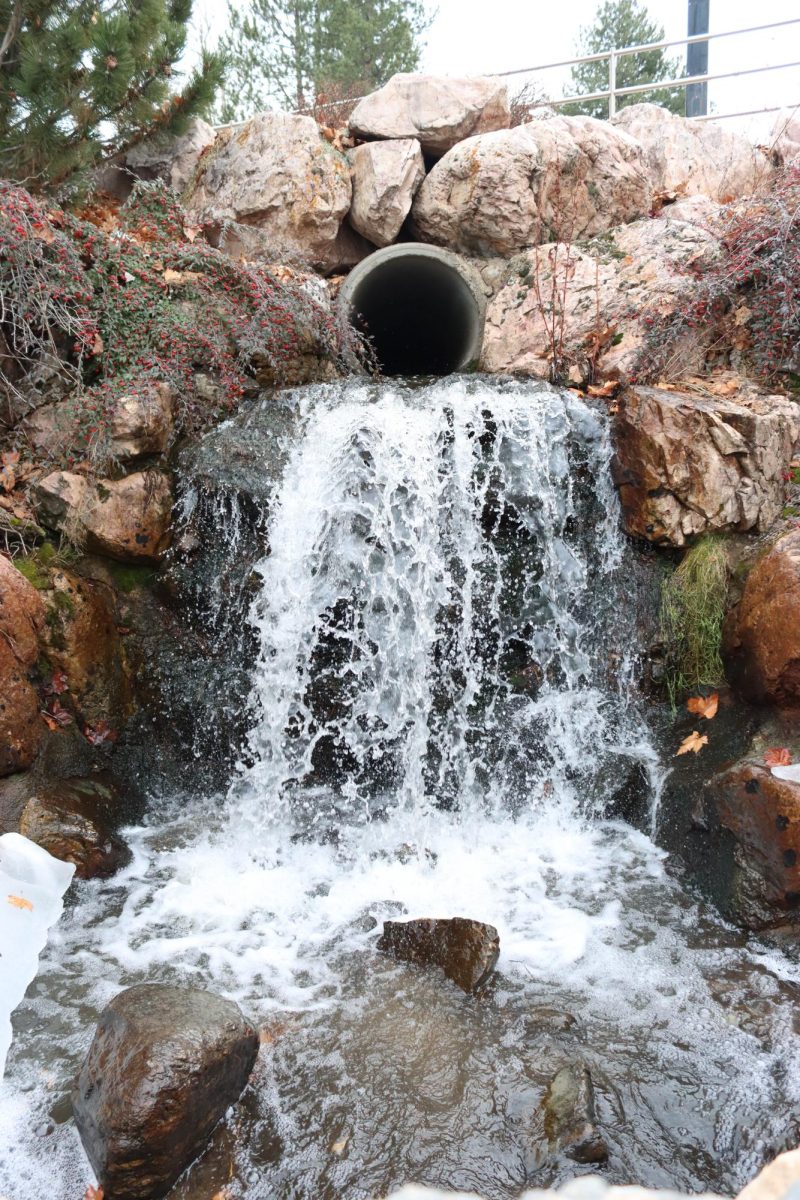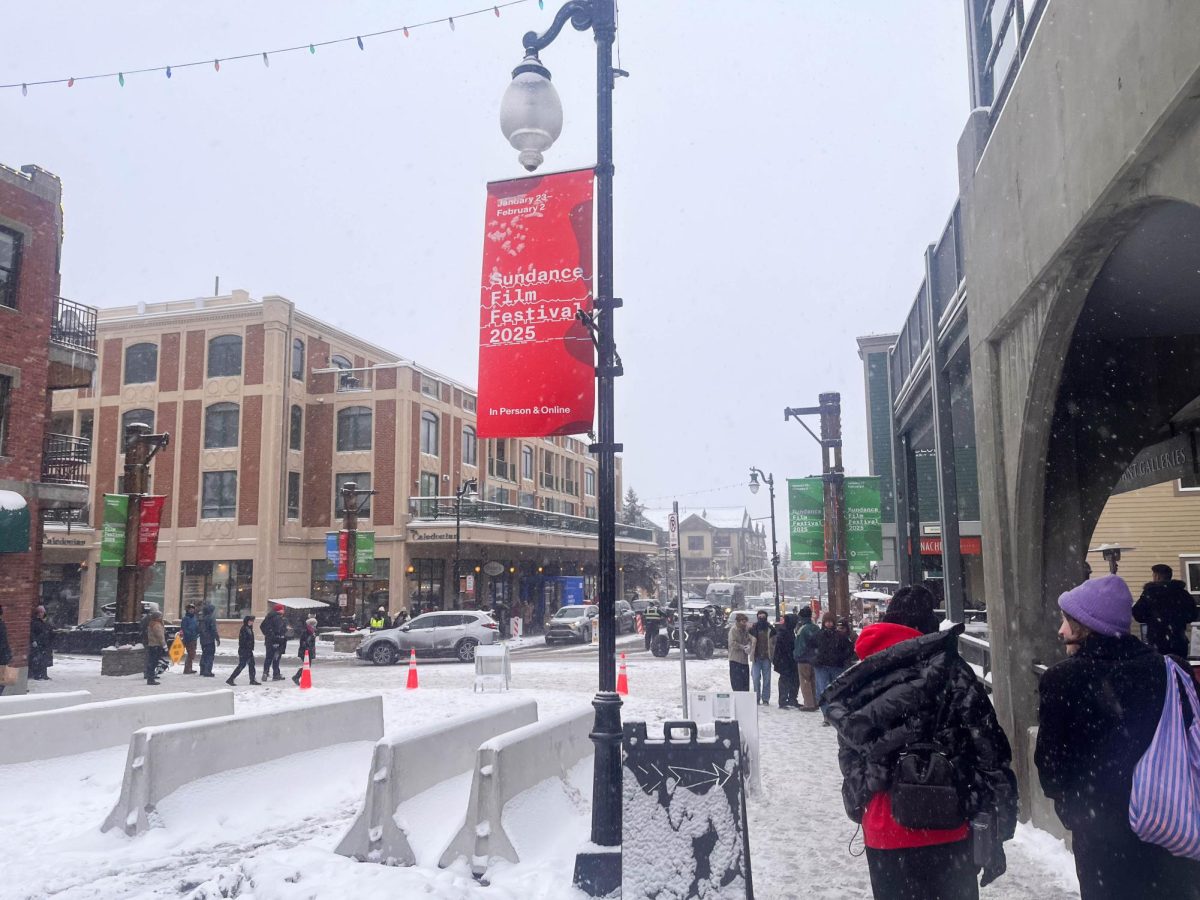Among the bustling trolleys and traffic in downtown Salt Lake City, the Utah Museum of Contemporary Art (UMOCA) lays tucked between Abravanel Hall and City Creek Center. Of the numerous museums scattered around the gridded streets, UMOCA is an institution holding true to one of its foundational beliefs: museums should be free.
Kevin Lucey, a UMOCA administrator, said the museum operates without an admission fee to encourage community members to attend, regardless of social or economic background.
“We believe art should be free,” Lucey said. “Art for everyone is our motto.”
The museum runs on contributions from museum goers (a five dollar donation is suggested), along with funding from the state government, a board of trustees and proceeds from an annual art auction gala.
Those who choose to donate receive a pin of gratitude from the grateful administrators of the institution.
Lucey believes about fifty percent of museum goers donate when they visit.
“I find people are more inclined to donate when they find it is all donation based,” Lucey said. “When people have the choice, they choose good. Typically.”
WSU Shaw Gallery Director Lydia Gravis believes that admission-free museums expand inclusivity within a diverse social and economic community.
“I believe museums should be free,” Gravis said. “It is important to provide access to all community members. Having a free museum creates a level of financial accessibility that allows anyone and everyone to experience it in the same way.”
Gravis noted it is important to recognize not all museums have the luxury of operating without an admissions cost. With bills to pay and public minds to feed, Gravis suggested that museums offer free, monthly opportunities to those who don’t have the finances to pay admission fees.
Lauren Bell, a Sugar House resident, visits UMOCA frequently with her husband. Bell said the donation based aspect of the museum makes her admire the company more.
“Having an optional entrance fee allows people to come who may not always have the option to experience such beauty and artistic culture,” Bell continued.
UMOCA is a five-time recipient of the Andy Warhol Foundation and a two-time recipient of the Art Works Grant from the National Endowment for the Art. Both of these organizations provide funding for museums that exhibit artistic excellence as determined by specific and calculated guidelines.
The museum was founded in 1931 by Alta Rawlins Jensen, who desired to create a home for art in Salt Lake City. Jensen was the first acting president whose art operation depended on volunteers to host classes and develop exhibitions.
Originally named the Art Barn Association, in 1958 the museum’s name changed to the Salt Lake Art Center, and in 2011, the focus of the museum shifted solely to contemporary art, creating UMOCA.
Throughout several decades of operation and name changes, the museum’s goal has remained unchanged. UMOCA continues to provide Utah’s community with new perspectives via out-of-state artwork and focuses on education and outreach programs, all without charging for admission.
Samuel Rich, a museum patron, was impressed with UMOCA’s optional entrance fee. He visited the museum on a friend’s recommendation, and contributed to UMOCA to support a local art venue, as well as provide others who could not afford to visit with the opportunity to look around.
“There was a good chunk of my life that I wasn’t able to afford movies, eating out and definitely not art galleries,” Rich said. “I think back then and how much I would have appreciated the understanding of my situation to be able to visit a place like this for free if I could. I have a lot more to give now than I did back then and am happy to share what I can.”
Like Bell, Rich admires the company’s donation entrance fee because “it shows their passion behind sharing art with everyone.”
Aman Gada, a Weber State University photography graduate, explained that he understands the funds the institutions require to maintain but believes students should always receive free admission.

“Contemporary art is a learning experience,” Gada said. “If you want students to attend, you need to realize that a $5 entrance fee could be $5 for dinner they can’t go without.”
While the free admittance adds to the museum’s novelty, UMOCA aims to be a competitive force in the museum realm, as well as contributing to Utah’s growing art scene.
According to their website, “UMOCA advances and elevates the community of contemporary arts and culture, establishing Utah as a leading voice for the spirit of innovation, experimentation and dialogue surrounding the issues of our time.”
“I think UMOCA is a valuable anchor for the contemporary art scene in Utah,” Gravis said. “Museums inhabit the cultural fabric of communities by exposing visitors to new ideas and works that represent the times in which they live.”




















